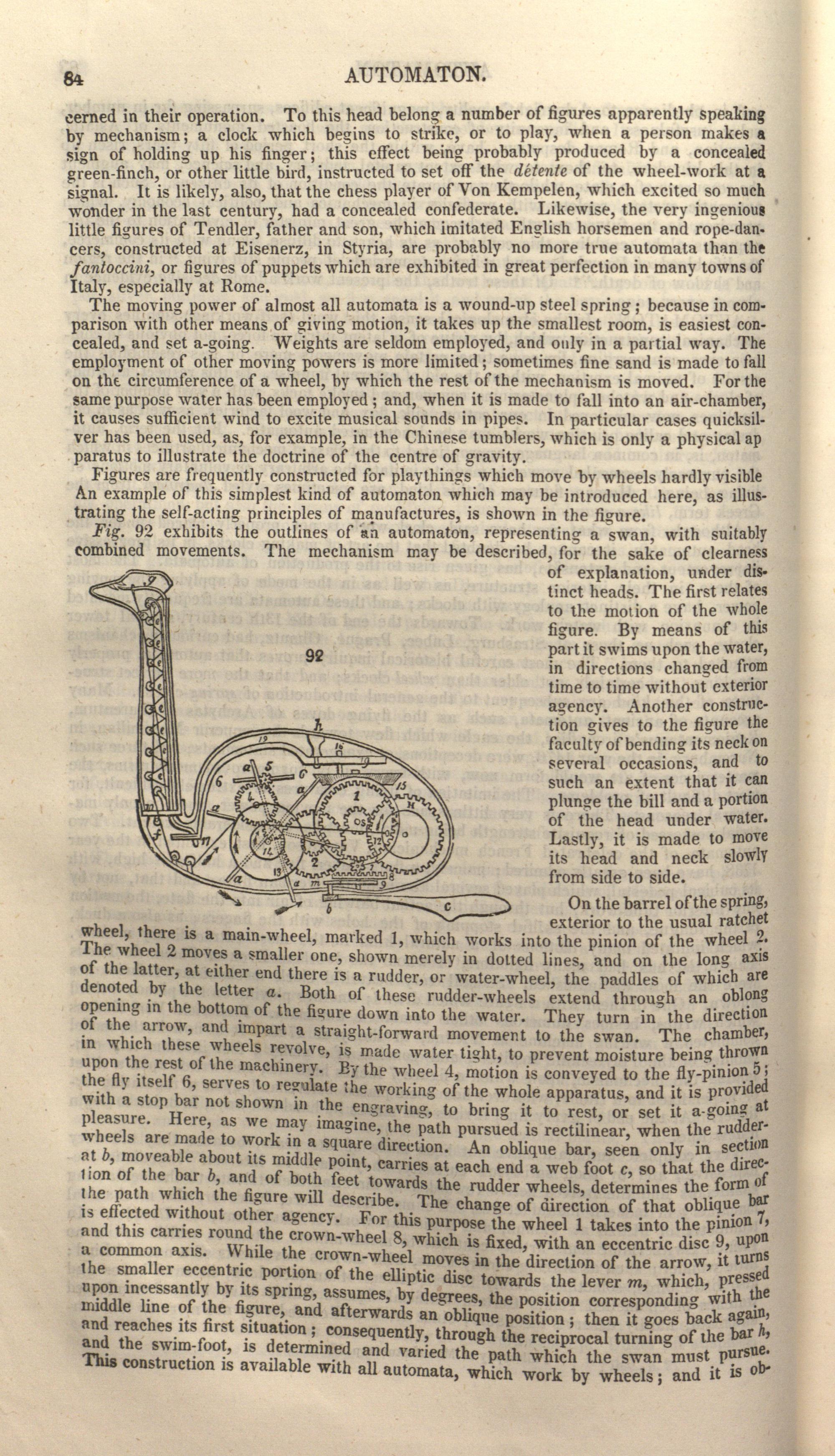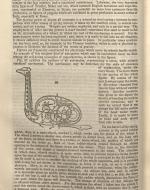Automaton Swan
Created by David Rettenmaier on Tue, 11/24/2015 - 21:58
Description:
Fig. 92 exhibits the outlines of an automaton, representing a swan, with suitably combined movements. The mechanism may be described, for the sake of clearness of explanation, under distinct heads. The first relates to the motion of the whole figure. By means of this part it swims upon the water, in directions changed from time to time without exterior agency. Another construction gives to the figure the faculty of bending its neck on several occasions, and to such an extent that it can plunge the bill and a portion of the head under water. Lastly, it is made to move its head and neck slowly from side to side. (84)The inside of the swan’s body is depicted as a series of interlocking and carefully numbered and lettered gears. Behind the duck extends a rudder, which helps it to swim. The neck, “the part which requires the most careful workmanship,” is shown as a series of interlinked triangles representing a steel spring (85).
Fig. 92 exhibits the outlines of an automaton, representing a swan, with suitably combined movements. The mechanism may be described, for the sake of clearness of explanation, under distinct heads. The first relates to the motion of the whole figure. By means of this part it swims upon the water, in directions changed from time to time without exterior agency. Another construction gives to the figure the faculty of bending its neck on several occasions, and to such an extent that it can plunge the bill and a portion of the head under water. Lastly, it is made to move its head and neck slowly from side to side. (84)The inside of the swan’s body is depicted as a series of interlocking and carefully numbered and lettered gears. Behind the duck extends a rudder, which helps it to swim. The neck, “the part which requires the most careful workmanship,” is shown as a series of interlinked triangles representing a steel spring (85).
Copyright:
©


